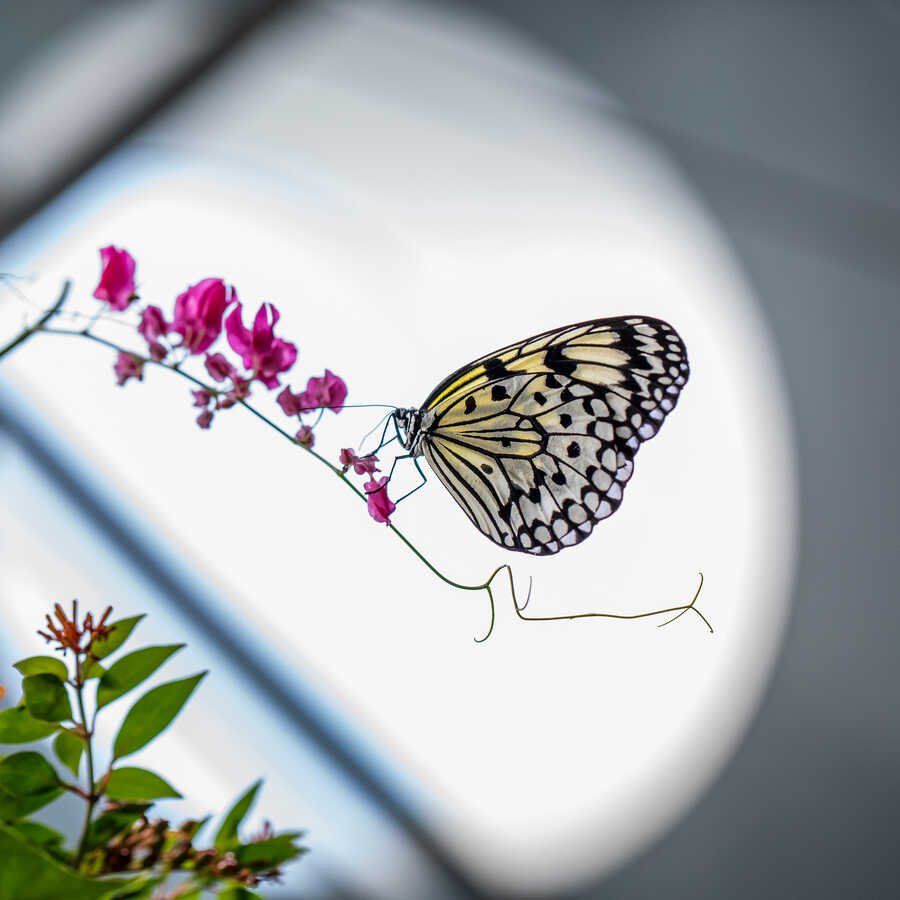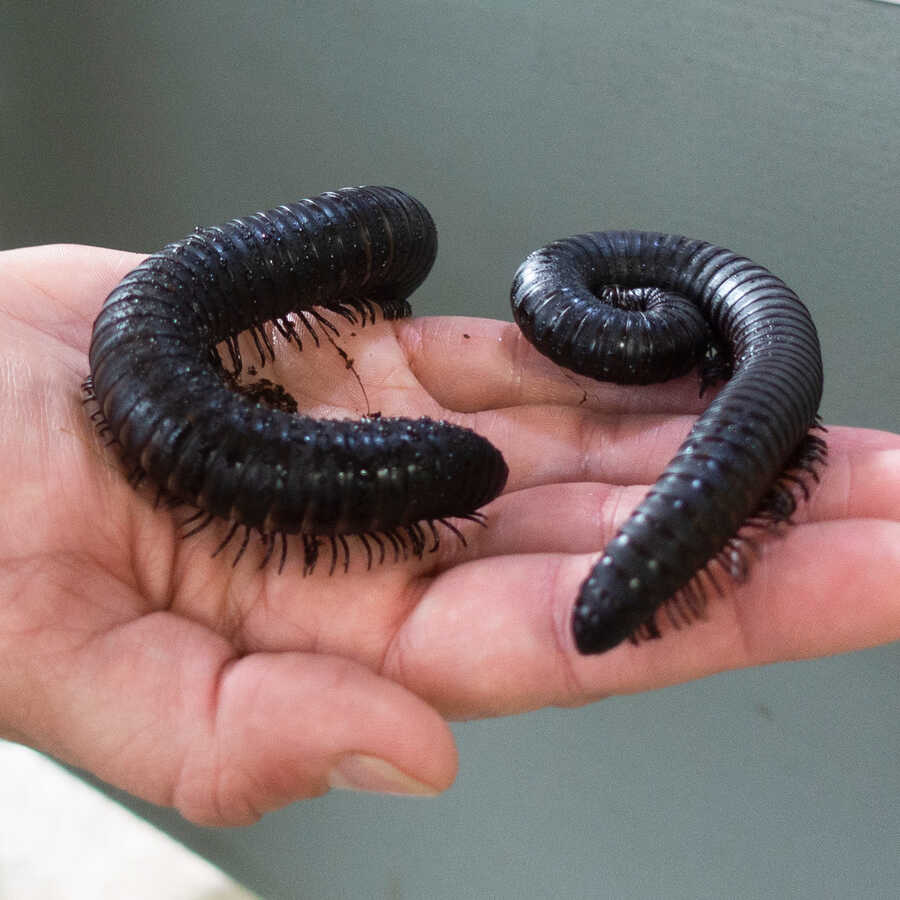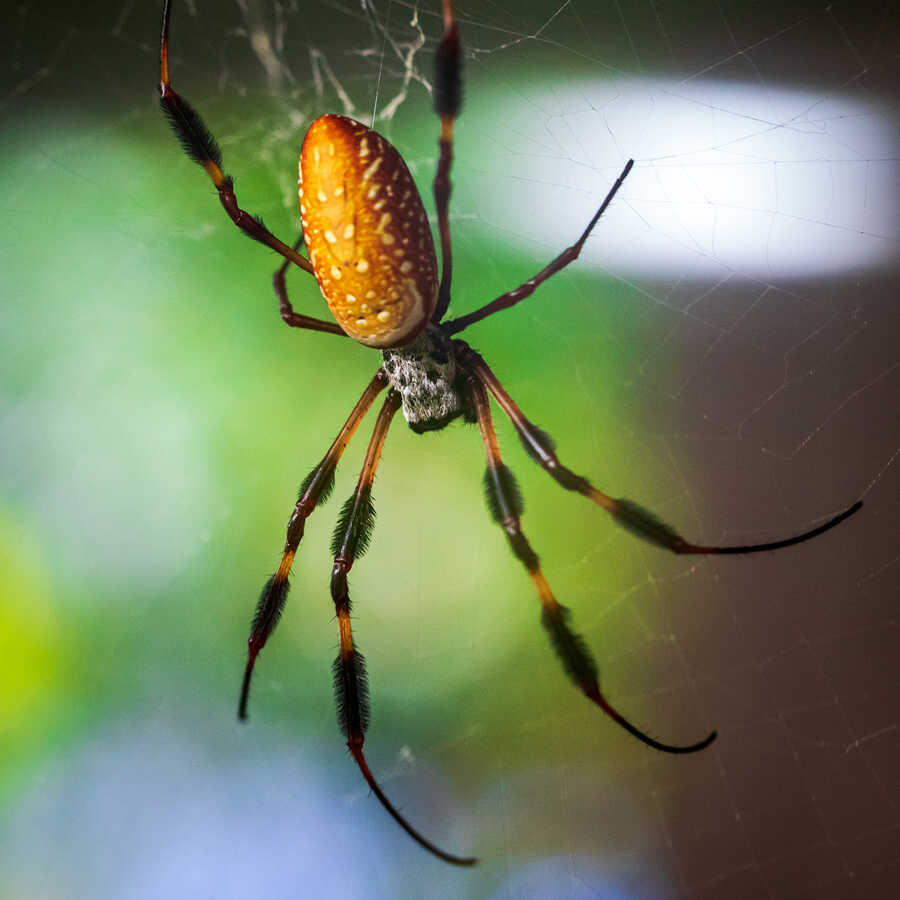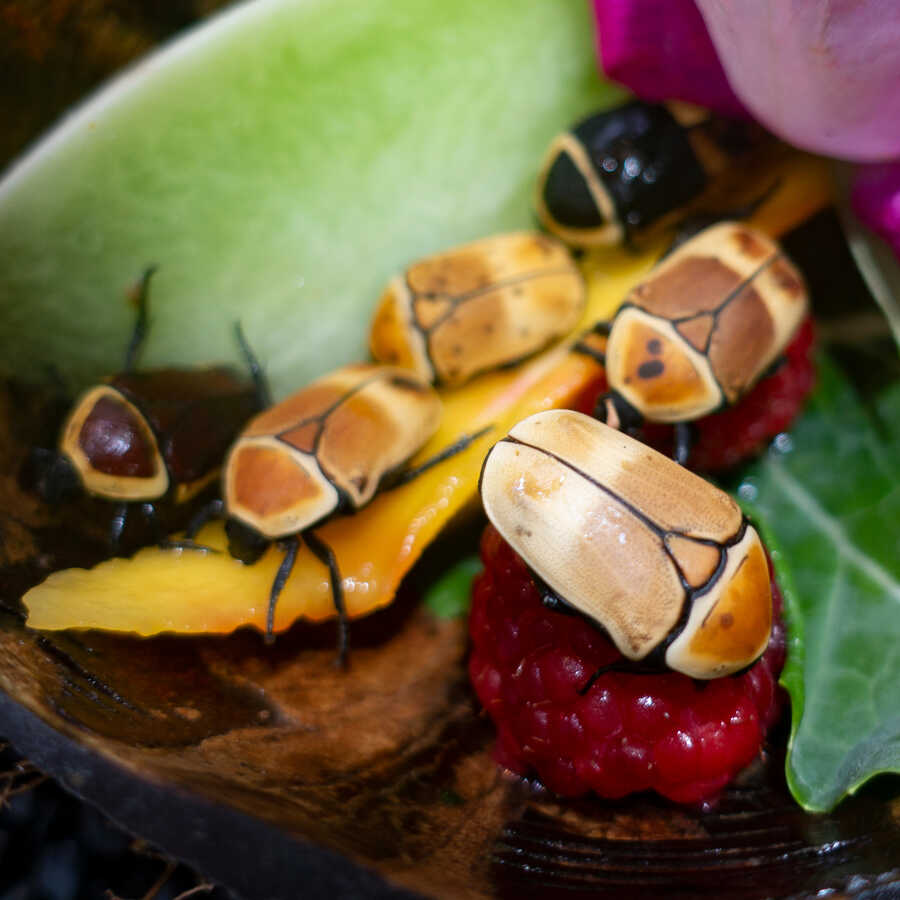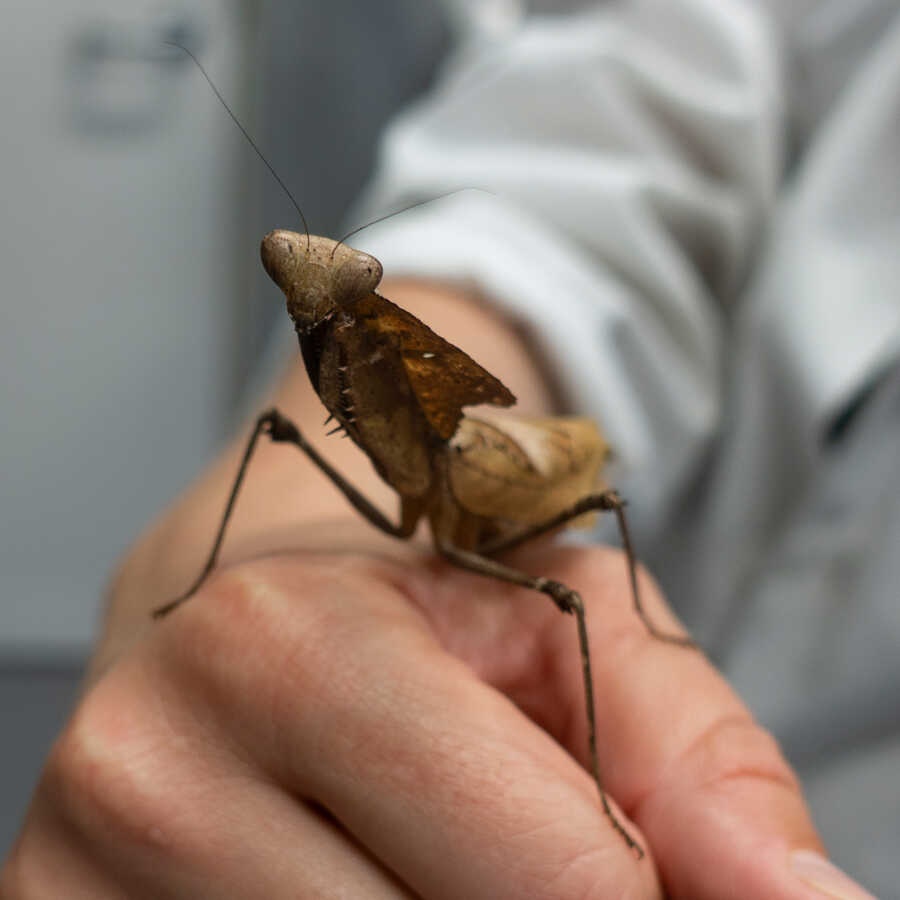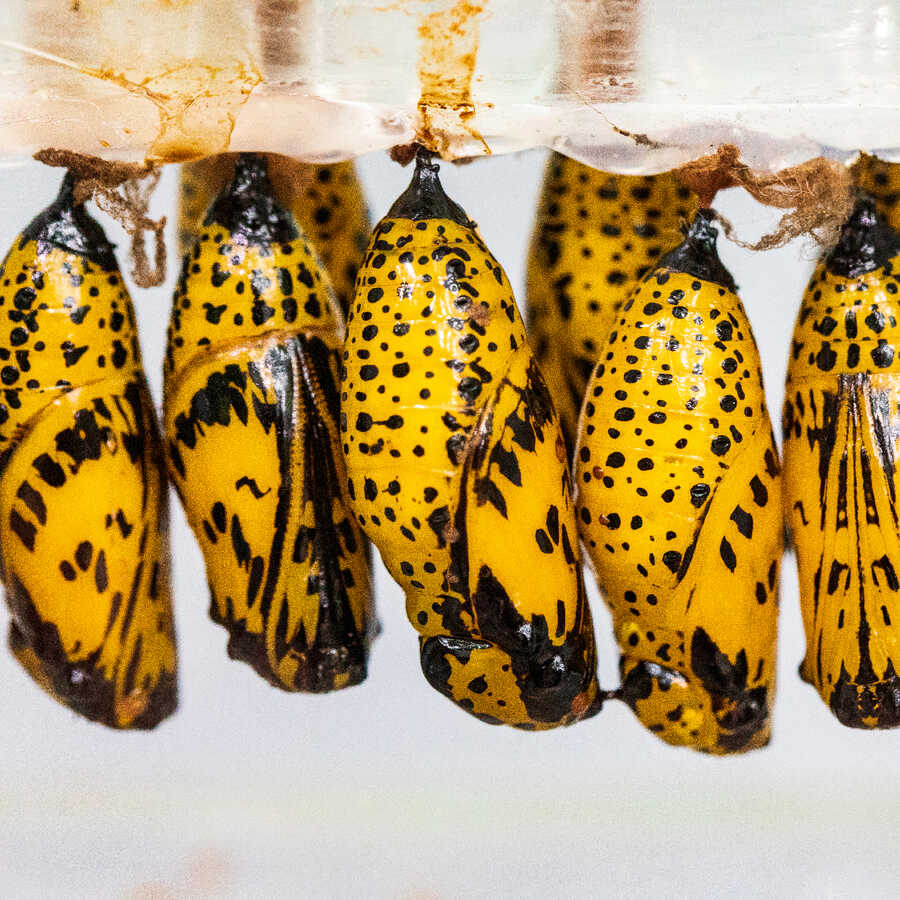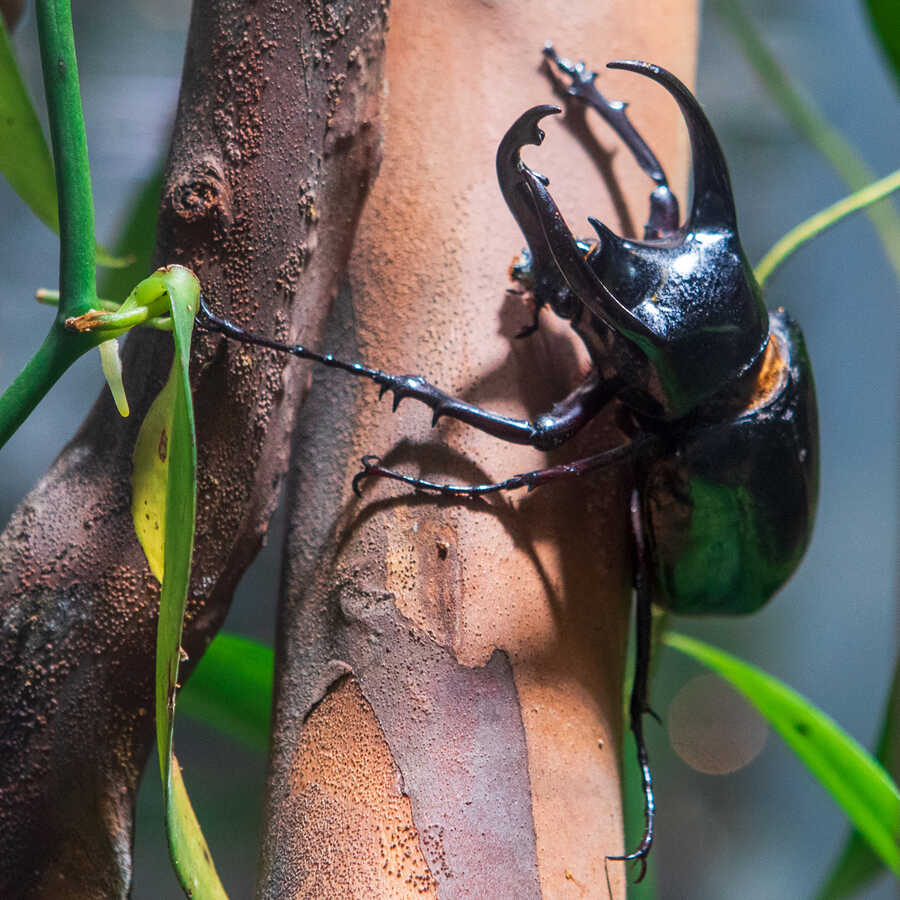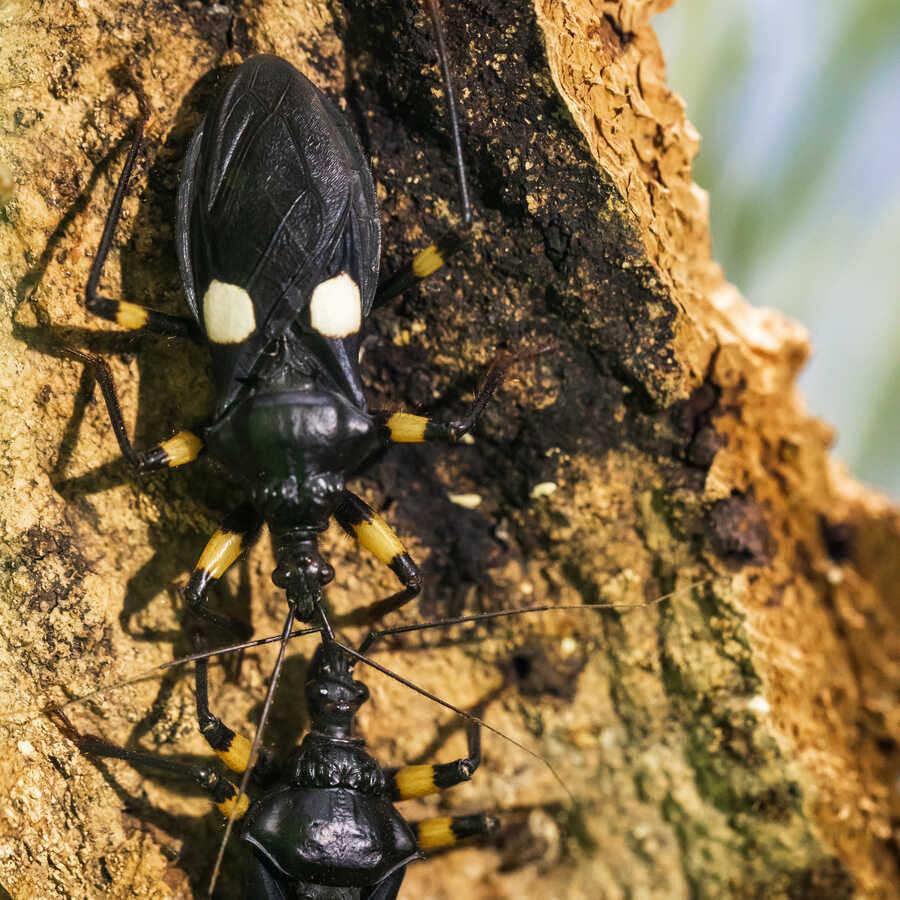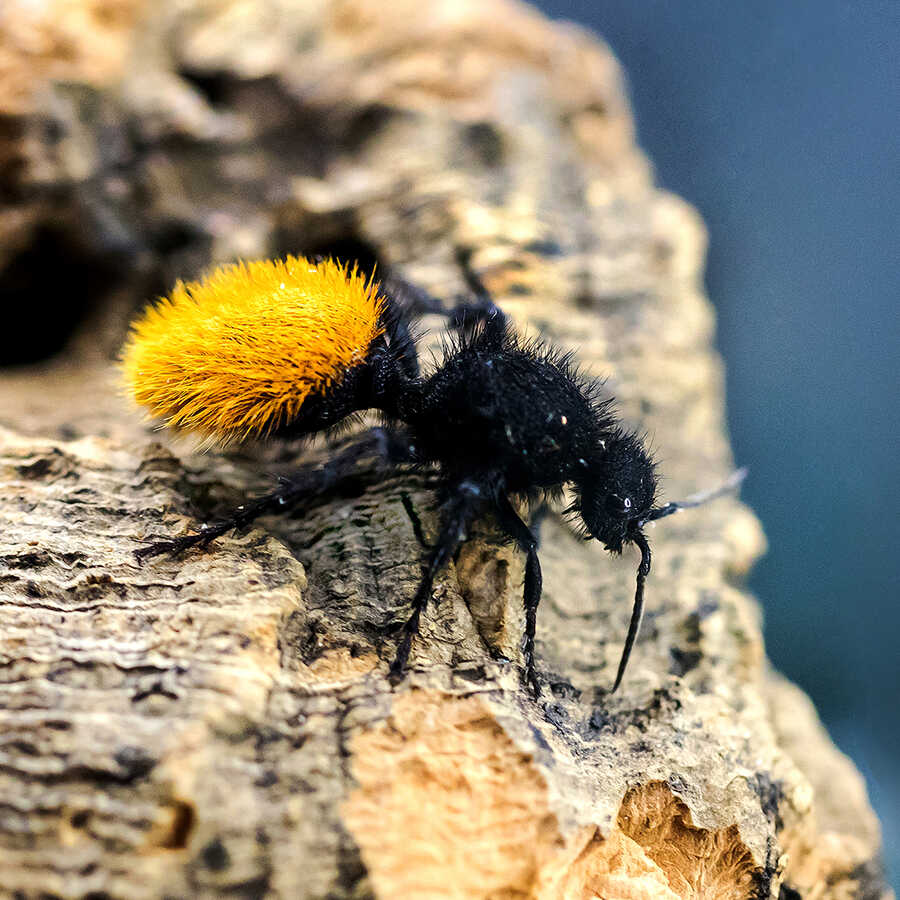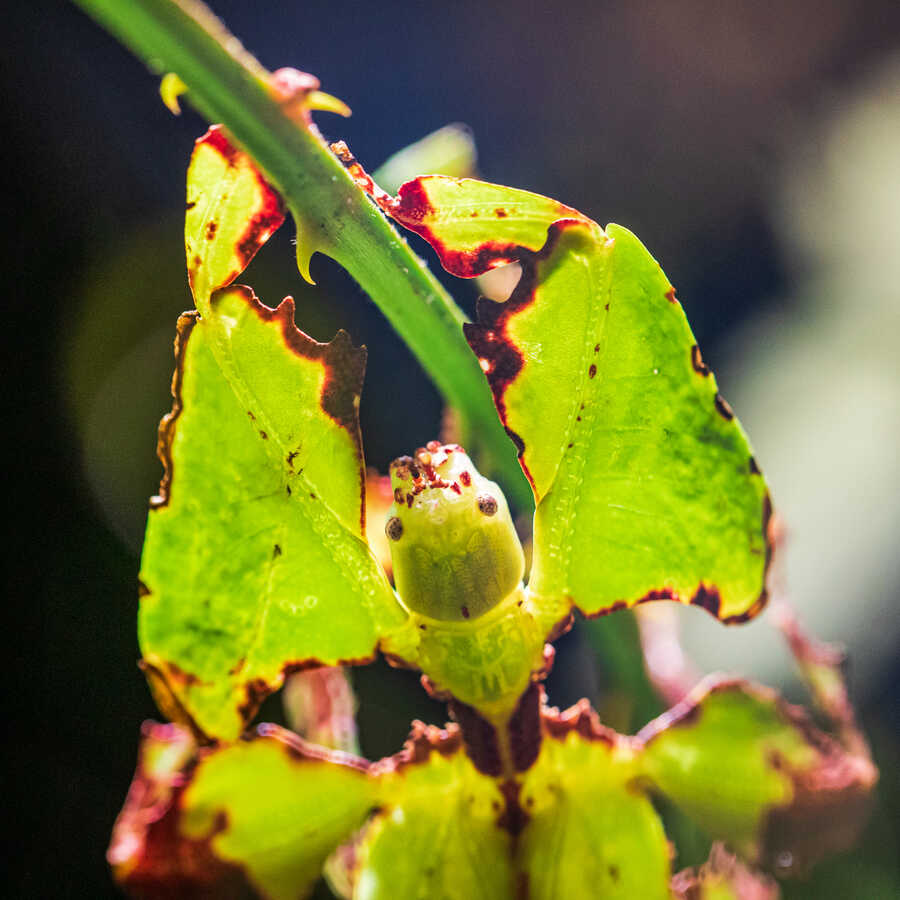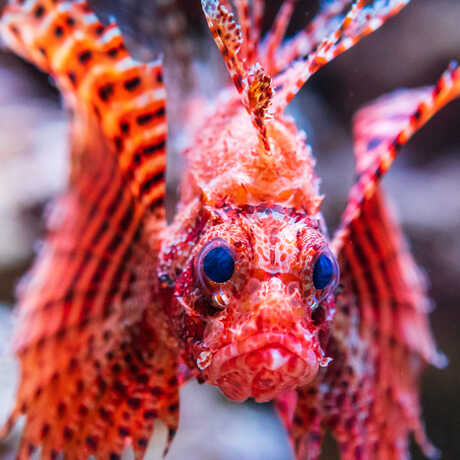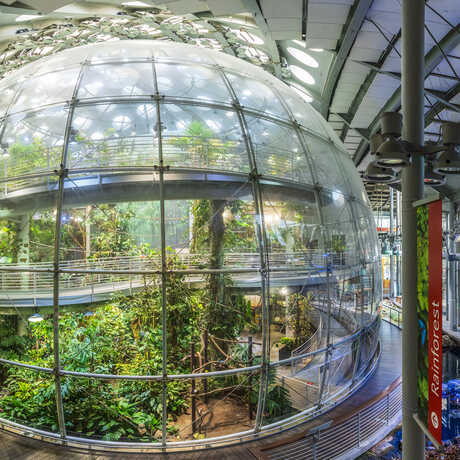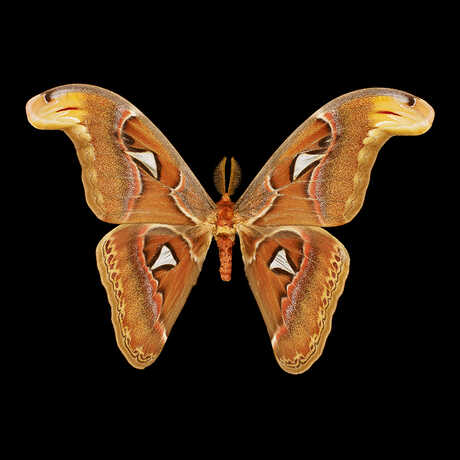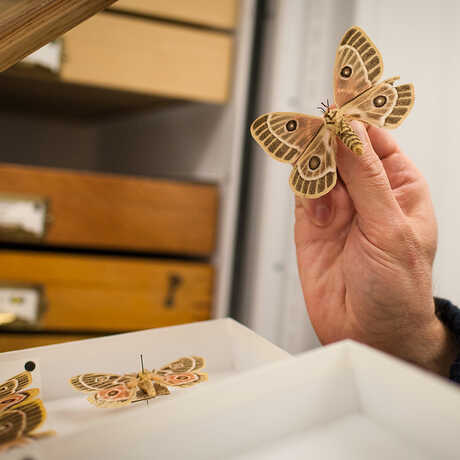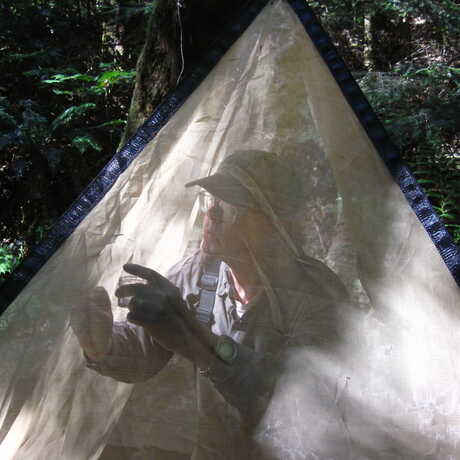
Bugs
Bugs closed on January 22, 2023. See where it's headed next!
It’s a bug’s world—we’re just living in it. Accounting for up to 90% of all animal species on Earth, the multi-legged, exoskeleton-encased wonders under our feet and over our heads keep our planet buzzing in more ways than one.
Bugs, an exhibition created by Te Papa Tongarewa Museum of New Zealand and Weta Workshop (the creative studio behind the Lord of the Rings films’ fantastical sets), reveals the secrets of insects and arthropods in delightful, dazzling ways. From immersive activities that get you thinking to hands-on games that get you moving, Bugs inspires us to be curious about the tiny-but-mighty creatures among us, appreciative of the vital role they play in the natural world, and energized to help them thrive.
Fair warning: You may find yourself metamorphosing into an amateur entomologist after visiting the enchanting realm of insects!
Sensory advisory: This exhibition is a high-sensory environment containing significant lighting effects (including a strobe light located in the dragonfly chamber), sounds and music, and interactive media screens. View our interactive map for a sensory guide to all Academy exhibits and spaces.
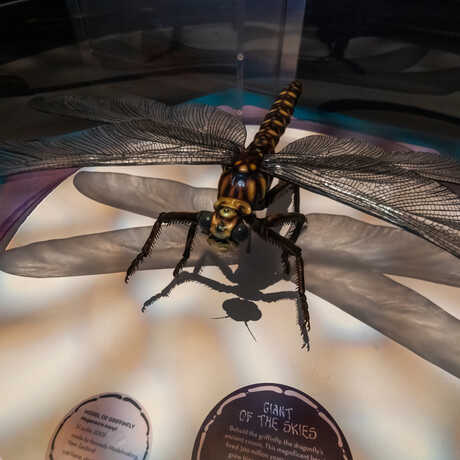
Mingle with models
You’re probably used to looking down at bugs. Get ready to look up! Bugs boasts an impressive array of extra-large arthropod models, including an orchid mantis (Hymenopus coronatus), a venomous katipo spider (Lactrodectus katipo), and an ancient dragonfly (Meganeura monyi, pictured here) that cruised the skies 300 million years ago…with 28-inch wings!

Your brain on bugs
Everyone has opinions about insects. Bugs has facts! Let your geek flag fly at the exhibition’s multimedia stations, where you can interact with real scientists, test out insect aerodynamics in a wind tunnel, and manually control the speed of insect flight videos to see the beat of every wing in extreme slo-mo.
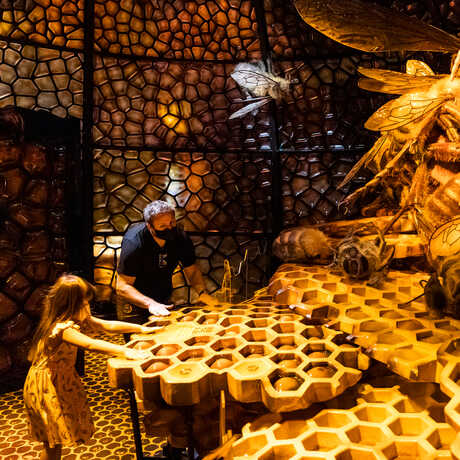
Critter competitions
Honeybees vs. hornets: Who will win? That depends on you. Enter the Swarms chamber and use your hands to heat up a Japanese honeybee hive to repel an invading hornet. Then, catch your breath and compete against a lightning-fast orchid mantis to see whose reflexes are the speediest.
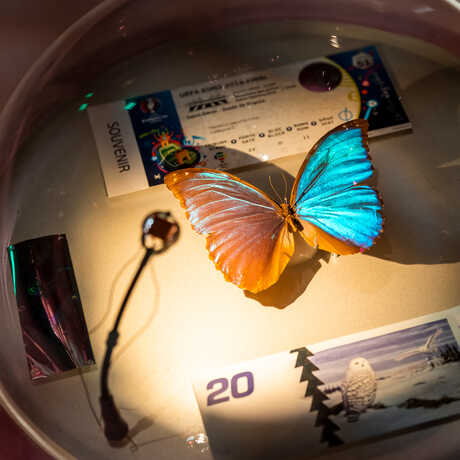
Stun and stunner
Eye-catching displays bring the physical beauty, ecological value, and cultural significance of insects into sharper focus. Magnifying lenses highlight the jewel-like details of dozens of insect specimens, while fascinating folklore illustrates the importance of the giant wētā and pūriri moth for New Zealand’s Indigenous Māori people.

Bugs was on view in the Academy's Forum Gallery from May 27, 2022, through January 22, 2023.
*While the Bugs exhibit and this webpage use “insects” and “bugs” for simplicity’s sake, we’re sticklers for scientific detail: Many of the creatures on exhibit aren’t true bugs or insects, but arachnids, diplopods, and myriapods. Also, please note that our cast of terrestrial invertebrates is always rotating. Some of the species shown here may no longer be on exhibit during your visit—but you may also see some new (tiny) faces that haven’t gotten their glamour shots yet!




